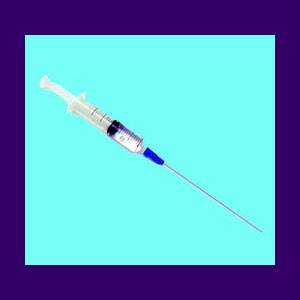
Ozone discolysis is the technical medical term for the method of treating herniated discs with injections of ozone and oxygen gas. This controversial technique has been around for some time, but has not established itself thusfar in the hierarchy of accepted disc therapies. Although ozone treatment is promising, mostly due to its minimally invasive nature and low incidence of side effects and complications, it is currently in low demand and even smaller supply.
This investigation discusses the use of ozone injections for treating specific types of disc-related back and neck pain.
What is Ozone Discolysis?
Ozone herniated disc treatment consists of 2 possible varieties of procedure: First are the less invasive multiple injections of ozone and oxygen gas into the general region of the bulging disc. Next is the more formal procedure of fewer injections placed directly into the herniated section of disc performed under live x-ray. Both forms of therapy seek to decrease the mass of the nucleus pulposus, decompressing the disc without the need for surgery.
The ozone utilized has a chemical reaction with the nucleus material and lessens the bulk and mass of the interior of the disc. In theory, if the bulge is reduced, the pressure on surrounding neurological tissues will be also, eliminating or reducing symptomatic expression within a few days time.
Some patients are confused by the terms oxygen and/or ozone and believe that inhaling pure versions of these substances can help their pain. This is completely incorrect. Oral oxygen or ozone therapy will do nothing to relieve back pain due to a herniated disc.
Ozone Disc Treatment Issues
Many surgeons do not believe in the efficacy of this technique at all. This is no surprise, since it would take away business from them if found to be effective. The financial side of the back pain industry is always present when it comes to treatment recommendations. Other surgeons recognize the potential of a nonsurgical injection decompression technology. Since risks are minimal for most patients, research continues.
Of course, new laser decompression procedures and non-surgical spinal decompression using methods, like the DRX9000, VAX-D and AccuSpina, have already found their way into mainstream medicine and offer convincing reasons to avoid open spinal surgery for almost any disc concern. Personally, I am hopeful that some form of effective injection-based disc nucleus treatment will eventually become commonplace and save patients from additional suffering due to barbaric and often unsuccessful surgical interventions.
Ozone Discolysis Conclusions
I am continually watching news of this treatment and following the research closely. Although it is clear that most herniated discs do not need treatment, at least this modality is minimally invasive and spares patients the horrors of back surgery. In that respect, it gets my nod of approval conceptually.
Whether or not the therapy will ever be proven to be a viable option is yet to be determined, but judging by the plethora of back pain treatments in development, I am sure we will see more of it soon; especially if there is money to be made from its use.
Research is also ongoing about alternative substances which can be injected into the disc to dissolve the mass of the bulging nucleus. Various organic and synthesized proteins are in trials and may be more effective than ozone in this regard.




